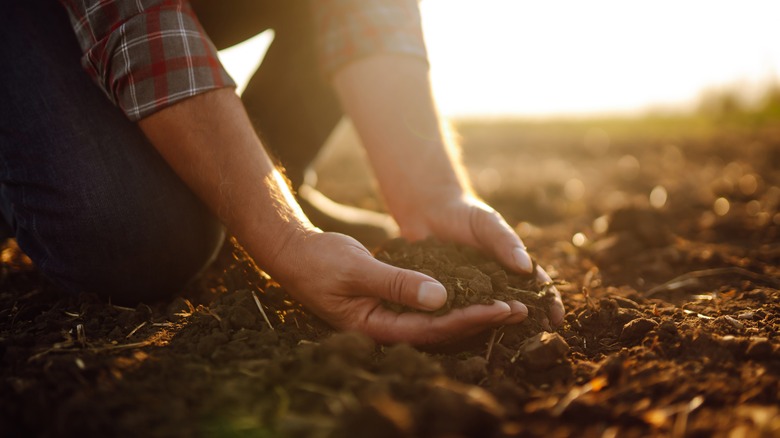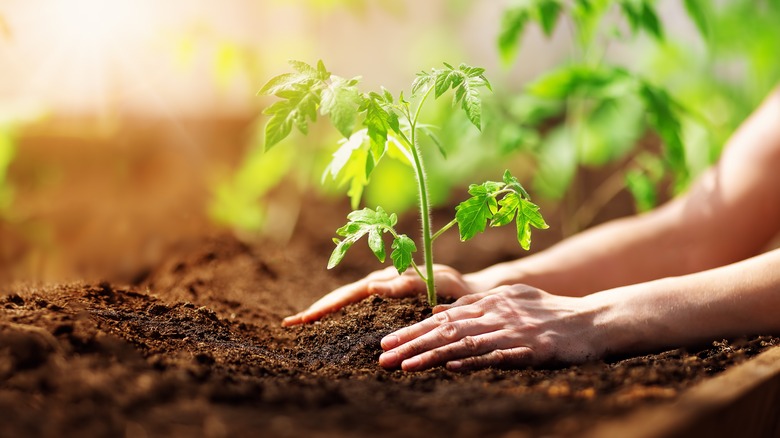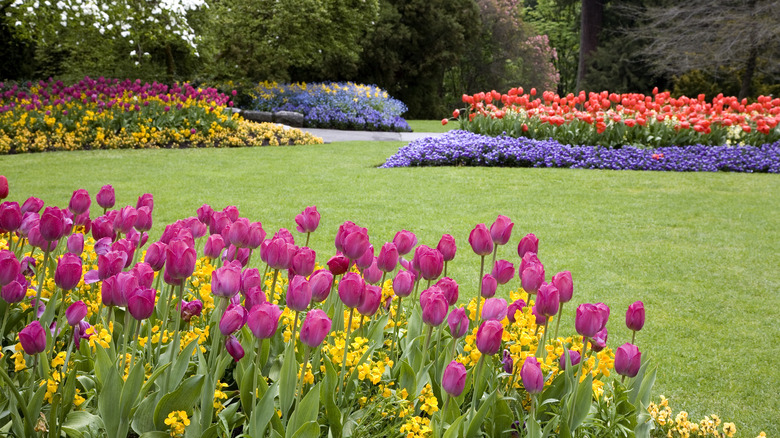What Is Clay Soil, And Is It Right For Your Garden?
Clay soils are among the many kinds of soil found in gardens and landscapes, distinguished by their delicate texture and compact composition due to high mineral concentration, specifically silicates. Their small particles pack tightly, restricting the movement of air, water, and nutrients. Clay soil's unique composition gives it both benefits and drawbacks when used for gardening, with positives including better water retention than sandy or silty varieties and increased fertility. However, clay soil's dense structure often results in poor drainage that can result in waterlogged roots and plant disease.
Whether clay soil suits your garden depends on the plants you wish to grow. Some plants thrive in clay soil, while others may struggle. Therefore, understanding your plants' soil preferences and possibly amending your soil to meet these needs may be necessary for a successful garden. Clay soil can be improved for gardening purposes by adding organic matter, like compost, which can help to improve its structure and drainage.
Pros and cons to clay soil
Clay soil has certain qualities that can be both beneficial and detrimental to gardening. One of the notable benefits of clay soil is its ability to retain moisture well due to its density. Clay soil is also more nutrient-rich and fertile than other soil types. Additionally, clay soils anchor roots securely into the ground. They also reduce plant heaving (when a plant appears to climb up the soil) caused by repeated freezing and thawing. Since clay soil allows roots to stay firmly in the ground, heaving is less likely.
However, clay soil presents several challenges as well. Its density leads to slow drainage, causing water to pool on the surface rather than soaking in. This can result in waterlogged roots and potentially plant disease. Clay soil tends to take longer to heat up in the spring, often resulting in a delayed start to the planting season. Its dense structure can easily become compacted, which poses challenges for root growth. Clay soil may present challenges, but these can be addressed by mixing organic materials such as compost, bark, sawdust, or peat moss into its texture directly. This helps improve the structure, drainage, nutrient content, as well as that plant's growth potential in clay soil.
Clay soil compatibility
Clay soil presents unique challenges for various types of plants. A few tree and shrub varieties possess the root strength to penetrate this challenging soil type and can thrive in it. They have evolved to adapt to the dense, slow-draining nature of clay soil, utilizing their robust root systems to force their way through the compacted ground and tap into the nutrient richness that clay soil can offer. However, many annuals, perennials, and vegetable plants face significant challenges when planted in clay soil. The compact and heavy nature of the soil can inhibit these plants' ability to establish themselves effectively.
Unlike some trees and shrubs with sturdy roots, these plants often possess more delicate root systems. Their challenges with penetrating the soil can restrict their access to essential nutrients and water. These issues can cause the plants to not grow as tall, be less healthy, and produce fewer vegetables. Bulbous plants like tulips and daffodils struggle in clay soil environments as their bulbs store nutrients that require good drainage. Clay soil's slow drainage rates often lead to overly moist conditions during winter when bulbs lie dormant, and this wetness could result in their bulbs rotting completely, killing off their plant altogether and precluding shoot emergence in springtime. Although clay soil provides ample nutrition for plant life, its physical characteristics pose difficulties for various plant types.


